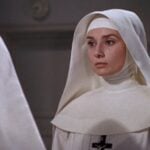- Joined
- Feb 8, 1999
- Messages
- 18,566
- Real Name
- Robert Harris
Also 16mm Auricon, with optically recorded track.True that 16mm sound film is single perf for sound projection, and I think single-perf for shooting news film with the old magnetic track used for sound-on-film for TV news departments prior to the coming of light weight & portable videotape cameras for news.
Still, outside of sound-on-film for immediate use on newscasts, standard 16mm films were usually shot with 2-perforations (one perf on one side and another perf on the other side). As with 35mm motion pictures, the sound track was recorded on a separate recorder (again, with the exception of news film).
In the 1980s, Super 16 with the single perf on one side of the film was a bit more expensive than standard 16mm with perferations on both sides.
After the turn of the century, it seemed that single perf became more common, but, in the 1970s & 1980s, single perf for filming in Super 16mm had to be special ordered. I went through this on a film in the mid-1980s that considered shooting Super 16, but that was abandoned as at the time there were not many camera houses that had the format (so, if you had camera problems or needed multiple Super 16 cameras, you might not have backup cameras available).








